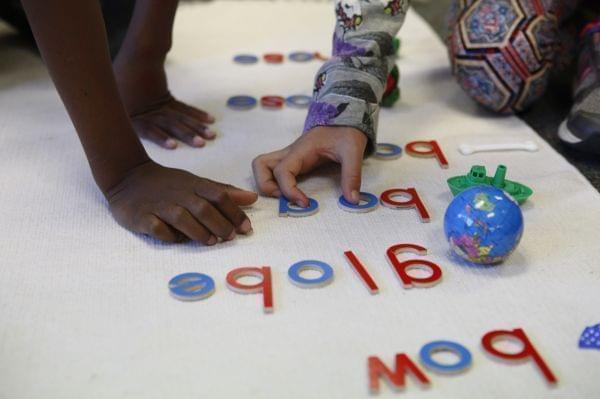U of I Study: Disparities In Discipline For Black And White Students May Start With Teacher Warnings

Students work in an elementary school classroom in North Carolina. Elissa Nadworny/NPR
A recent study from the University of Illinois found that black middle school students were less likely to be warned by a teacher about misbehavior than their white peers.
Black males in particular were found to be 95% less likely than white males to receive a warning from a teacher, or have their teacher notify their parents about bad behavior.
Kate Wegmann, a U of I social work professor who led the study, said the findings may help explain why black students experience disproportionate rates of discipline in school as compared to white students.
“When you’re warning a student about their behavior, you’re giving that student a chance to correct their behavior before they are subject to something that’s a more severe punishment… that might take them out of the classroom and cause them to be disengaged from learning,” Wegmann said.
The study analyzed survey data from about 4,100 students at 17 public and private schools in North Carolina between 2009 and 2014. The survey asked students to respond to questions about school climate, including questions about how often they received teacher warnings and experienced disciplinary consequences for their actions during the prior 30 days.
We’re seeing white students being given the opportunity to correct their behavior before they’re incurring consequences that remove them from the classroom. Whereas that same opportunity is not being extended to black students with the same frequency.Kate Weggman, U of I social work professor
The study findings indicate that while black students were less likely to receive warnings about their behavior, they experienced greater rates of exclusionary discipline in the form of out-of-school suspensions and office referrals.
Weggman said black students who committed behavior that was less severe in nature, including tardiness and arguing with teachers, were significantly less likely than white students committing the same behavior to be warned about it by a teacher.
“With these disparities in warnings, we’re seeing white students being given the opportunity to correct their behavior before they’re incurring consequences that remove them from the classroom. Whereas that same opportunity is not being extended to black students with the same frequency,” she said.
While black students of any gender were less likely to receive warnings, the study also found that black girls were 221% more likely to report receiving at least one warning from a teacher within the last month than white girls.
“For decades there has been this noticed disparity for African-American boys, and we are starting to see that become more of an issue for African-American girls as well,” Wegmann said.
Weggman said the study’s findings suggest that educators may want to look at the way they’re treating students before behavior escalates to a point that warrants consequences that would take them out of the classroom.
She said she hopes the study encourages teachers to become more self-aware about the way they warn students of different races about their behavior. The findings are also an indicator that school staff may need to put more consideration into how they warn students and how many chances they’re given to correct bad behavior, Wegmann said.
Disparate treatment of students may also normalize increased consequences for black students both in and out of the classroom — including police brutality, she said.
“Even if you’re not the African-American student who was punished rather than getting a warning, you may be the white student or Asian-American student sitting next to them that also sees this going on,” she said.
Normalizing such a disparity could lead people not to question different treatment for the same behaviors, Wegmann said.
She also encouraged parents to build relationships with teachers, and vice-versa. The more open the line of communication is, Wegmann said, the easier it is to warn families about a student’s behavior.
Follow Lee Gaines on Twitter: @LeeVGaines

